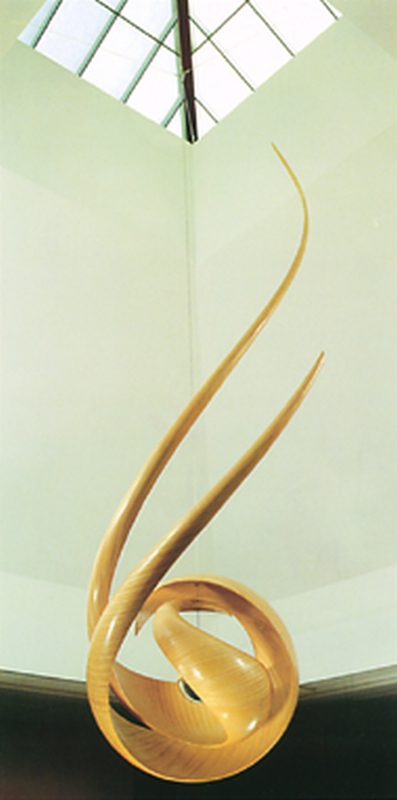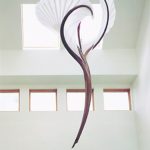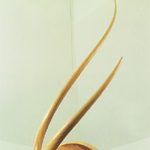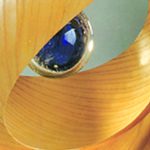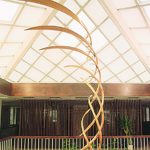
Since 1983 the Walpole, New Hampshire sculptor Jonathan Clowes (Clowes Sculpture) has been creating mobiles that hang in institutions and residences across the country. He uses WEST SYSTEM® epoxy as an adhesive and a coating for the wood laminate that form these pieces. Clowes describes his technique:
“In general, the long sinuous parts are formed from stacks of veneers that are bent over a mold to make a rough blank from which the pieces are carved. The most consistently good method for making molds is to bend strap steel or aluminum to the desired shape and support it with sufficient wood scrap bracing to form a backbone. Usually the bracing is held with screws or fillets of epoxy paste.
To clamp the laminate stack to the mold, short sticks of hardwood, pipe or bar are attached at frequent intervals across the underside of the metal strap. A lacing of rubber band cut from inner tube is crisscrossed across the laminate stack. The rubber band is hooked over the sticks that are protruding from the mold, making it easy to build up as much pressure as desired by adding more turn of the rubber band. If the stack of laminates has much width, it is a good idea to put a spacer on top of the laminates to distribute some of the pressure into the center of the stack. Quite often this is not much more than a scrap piece of Romex cable.
In gluing up the stack of laminates, we use the 209 Extra Slow Hardener to give us a maximum open time, with a small dose of 403 Microfiber to enhance the strength of the bond between layers. We will work through the stack laid out flat on a plank, applying epoxy to both sides of the veneers. Once the stack is all glued and as much epoxy as possible can be squeezed out and cleaned off, the stack is wrapped in stretchy Mobile Wrap® to keep the stack under control as it is moved to the mold and clamped. This also helps keep a messy process somewhat less messy by containing the squeeze out.
The rough blanks that come off the molds are then carved with grinders, spoke shaves, etc. The finished surface is coated with epoxy to protect the piece and to make the glue lines, which are saturated with epoxy, blend in with the rest of the wood. Using these techniques, I have been able to create very strong, delicate pieces.”

